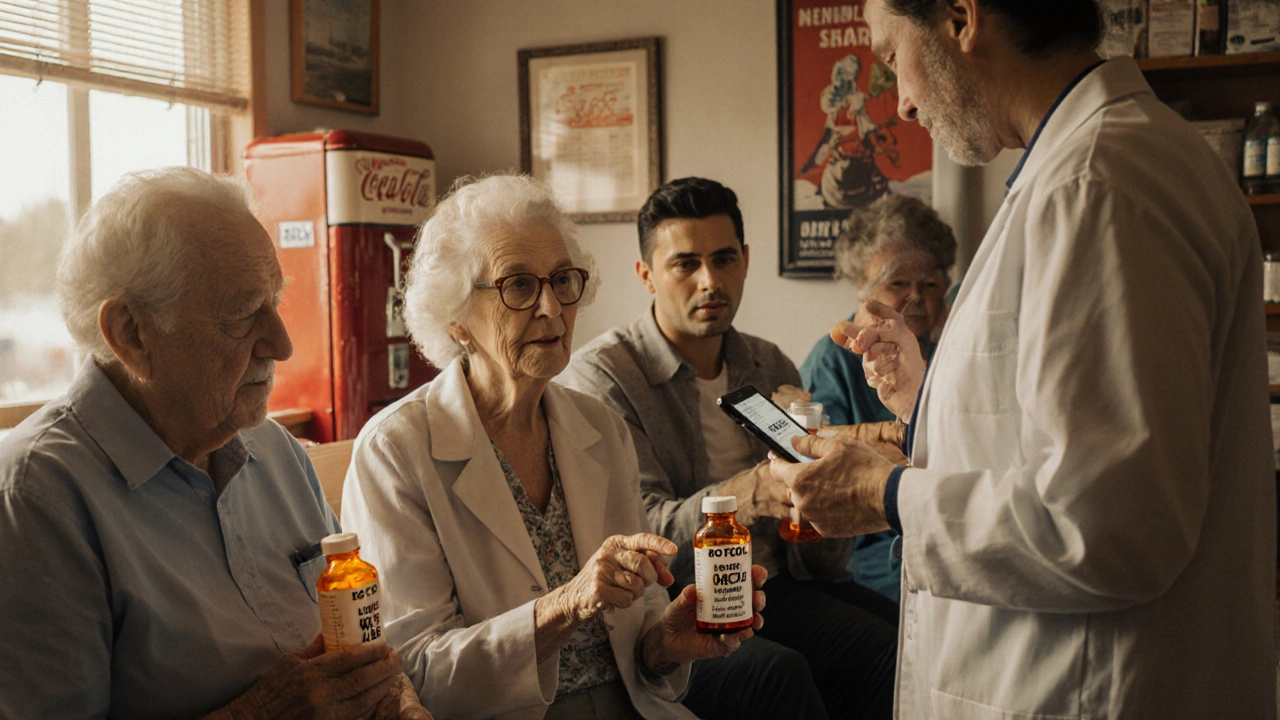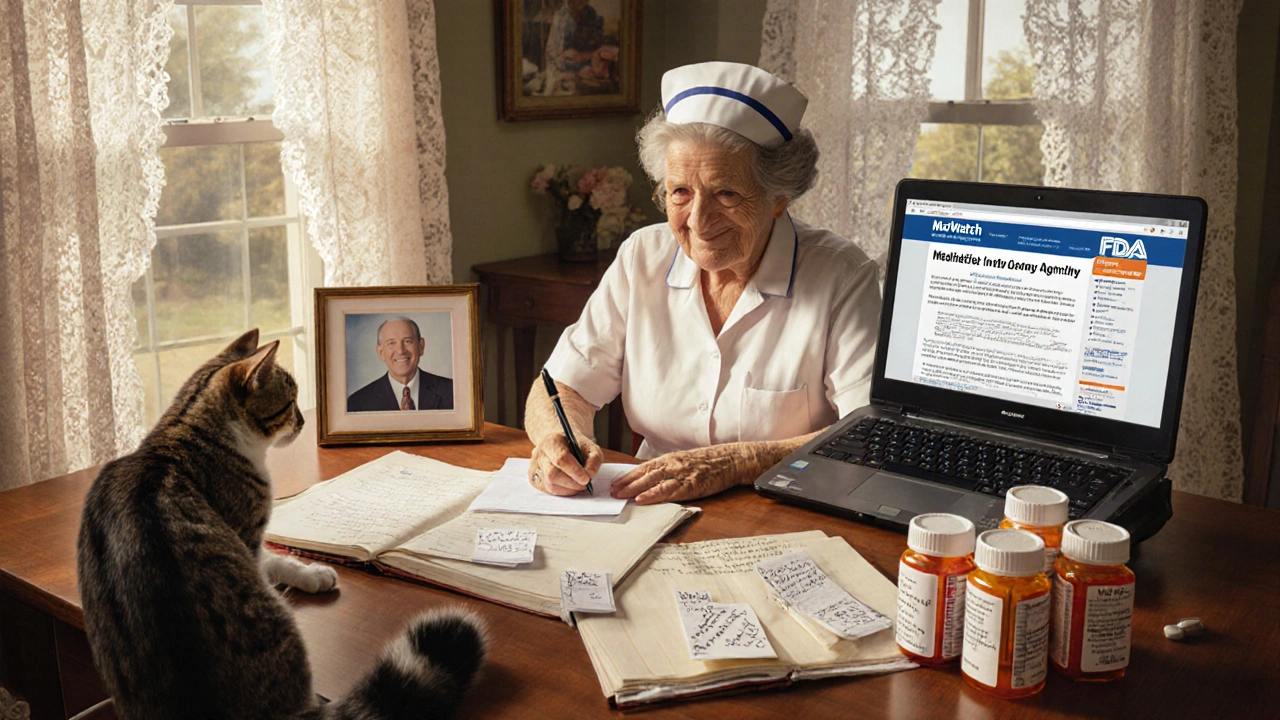When you take a generic medication, you expect it to work just like the brand-name version-and for the most part, it does. But sometimes, something unexpected happens. A rash that shouldn’t be there. A strange dizziness. A sudden drop in blood sugar. These aren’t common side effects. They’re rare. And if you’ve experienced one, you might wonder: Should I report this? The answer is yes-especially if it’s serious or unusual.
Why reporting rare side effects matters
Generic drugs make up over 90% of prescriptions filled in the U.S. They’re cheaper, widely available, and just as effective as brand-name drugs. But here’s the thing: the same active ingredient doesn’t mean the same experience for everyone. The inactive ingredients-like fillers, dyes, or preservatives-can vary between manufacturers. And while these don’t affect how the drug works, they can trigger rare reactions in sensitive people.One patient might take a generic version of levetiracetam for seizures and develop joint pain. Another might switch to a different generic brand of citalopram and start having heart rhythm changes. These aren’t random. They’re signals. And when enough people report them, regulators can act.
The FDA’s Adverse Event Reporting System (FAERS) holds over 25 million reports. Of those, about 38% involve generic drugs. That’s not because generics are less safe-it’s because they’re used more often. More use means more chances to spot rare problems. But only if people report them.
What counts as a rare adverse event?
A rare adverse event is something that happens in fewer than 1 in 1,000 people during clinical trials. But real-world use often uncovers even rarer reactions-1 in 10,000 or less. These are the ones that slip through initial testing because they’re too uncommon to show up in small study groups.Examples include:
- Stevens-Johnson Syndrome after taking generic lamotrigine (a seizure drug)
- Acute liver injury within weeks of starting a generic statin
- QT prolongation (a heart rhythm issue) with generic citalopram
- Severe arthralgia (joint pain) with generic levetiracetam
- Angioedema (swelling of the face or throat) from any generic ACE inhibitor
These aren’t typical side effects like drowsiness or nausea. They’re serious, unexpected, and sometimes life-threatening. If you’ve had one, it’s not just bad luck-it’s data that could save someone else’s life.
When to report: The 3 key triggers
You don’t need to be 100% sure the drug caused the problem. You just need to suspect it. Here are the three clear triggers for reporting:- No other explanation: Did the reaction happen after you started the generic? And did it go away when you stopped? If there’s no other cause-like an infection, another medication, or an injury-it’s worth reporting.
- Timing fits: Some reactions show up fast. Liver damage from statins? Usually within 1 to 6 weeks. Allergic reactions? Often within hours. If the timing matches known drug patterns, it’s a red flag.
- It matches a known mechanism: If you’ve had angioedema before with any ACE inhibitor, and now you’re getting it again with a generic version, that’s not coincidence. It’s a pattern.
Even if you’re not sure, report it. The FDA says 68% of major safety findings started with reports that had uncertain causality. Your uncertainty is part of the data.
How to report: Step by step
Reporting is simple. You don’t need to be a doctor. You just need to know what happened.If you’re a patient or caregiver:
- Write down what happened. Be specific. Not just “I felt sick.” Say: “On day 12 of taking generic metformin, I had severe sweating, shaking, and blurred vision. It lasted 4 hours.”
- Include your age, weight, and any other conditions you have.
- List every other medication you’re taking-including supplements and over-the-counter drugs.
- Write the name of the generic drug and the pharmacy you got it from.
- Find the lot number on the bottle. It’s usually printed near the expiration date. This is critical. Only 12% of consumer reports include it.
- Go to MedWatch and fill out Form 3500B. Or call 800-FDA-1088.
If you’re a healthcare provider:
- Use Form 3500 (the professional version).
- Include lab results with dates and reference ranges.
- Use the Naranjo Scale to rate how likely the drug caused the reaction. A score of 9 or higher means “definite.”
- Submit within 15 days if the event is serious and unexpected.
Don’t wait. The FDA’s Sentinel Initiative uses real-time data from 300 million patient records to catch problems early. But it needs your reports to work.

Why your report matters more than you think
In 2021, 17 reports of QT prolongation with generic citalopram led the FDA to update the label-limiting the dose for patients over 60. That change prevented future heart issues. In 2022, 42 reports of joint pain with generic levetiracetam triggered a formal safety review. Both cases started with one person saying, “This isn’t right.”Consumer reports are often less detailed than provider reports. Only 29% of patient-submitted reports have enough info for analysis. But even a short report can spark a bigger investigation. The FDA says 8.3% of all adverse event reports come from patients. That’s too low. And it’s fixable.
What’s not being reported-and why it’s dangerous
One of the biggest blind spots? Inactive ingredients. Generic drugs use different fillers than brand-name versions. Lactose, cornstarch, dyes-these can trigger reactions in people with allergies or sensitivities. Yet only 15% of reports mention them.Imagine someone with lactose intolerance takes a generic pill and gets severe diarrhea. They think it’s just their stomach. They don’t connect it to the drug. They don’t report it. But if 50 other people have the same reaction, and no one says anything, the FDA never sees the pattern. The same generic version keeps being sold. Someone else gets sick.
That’s why the FDA’s 2024 action plan includes better tools for consumers to report inactive ingredient issues. But until then, you have to be the one to speak up.
What happens after you report?
Your report goes into FAERS, where it’s mixed with thousands of others. AI tools now scan these reports for signals-patterns that humans might miss. Since 2020, machine learning has helped identify rare safety issues 4.8 months faster than before.If enough similar reports come in, the FDA may:
- Update the drug label with new warnings
- Require manufacturers to change their formulation
- Issue a public safety alert
- Ask for more studies
None of this happens without you.

Myths about generic drugs and safety
There’s a myth that generics are less monitored than brand-name drugs. That’s false. Under the Hatch-Waxman Act of 1984 and the FDASIA of 2012, generic manufacturers have the same legal duty to report adverse events. The FDA treats them equally.A 2021 study of 1.2 million reports found no significant difference in adverse event rates between generic and brand-name cardiovascular drugs. The only difference? Consumers were 18% less likely to include lot numbers on generic reports. That’s not about safety-it’s about information.
Another myth: “If it’s cheap, it must be lower quality.” But quality isn’t about price. It’s about consistency. The FDA inspects generic manufacturing sites just like brand-name ones. And if a batch fails, it’s pulled-regardless of cost.
What you can do today
You don’t have to wait for a crisis. Here’s how to protect yourself and others:- Always check the lot number on your prescription bottle. Write it down.
- Keep a list of all your medications, including generics and their manufacturers.
- Take note of any new symptoms-especially if they start within days of switching generics.
- If you’re unsure whether to report, report anyway. Better to send a report that turns out to be a false alarm than miss a real signal.
- Share this with others. Many people don’t know they can report side effects directly to the FDA.
Reporting isn’t about blaming a company. It’s about making sure the system works. Your voice helps improve safety for everyone who takes these drugs.
Frequently Asked Questions
Do I need to prove the generic drug caused my side effect before reporting?
No. You don’t need to prove causation. The FDA encourages reporting even when you’re unsure. In fact, 68% of major safety findings started with reports that had uncertain links to the drug. Your suspicion is valuable data.
Can I report a side effect from a generic drug even if I didn’t switch from the brand-name version?
Yes. It doesn’t matter if this was your first time taking the drug. If you experience a serious or unusual reaction, report it. Many people take generics from the start and still have rare reactions.
What if I don’t know the lot number on my medication?
Include it if you can-it’s critical for tracking. But if you don’t have it, still report. The FDA can often trace the batch using the pharmacy name and date filled. Just be sure to include those details.
Are generic drugs more likely to cause side effects than brand-name drugs?
No. Studies show no significant difference in adverse event rates between generics and brand-name drugs. The difference lies in reporting quality-consumers are less likely to include key details like lot numbers with generics, which makes analysis harder.
How long does it take for the FDA to act on a report?
There’s no fixed timeline. Some reports trigger quick label updates within months. Others contribute to long-term safety reviews. The system works cumulatively-each report adds to the pattern. One report might not change anything, but 50 can.
Can I report side effects from over-the-counter generics?
Yes. All prescription and over-the-counter medications, including generics, can be reported through MedWatch. Even common OTC drugs like ibuprofen or acetaminophen can cause rare reactions in some people.
Is reporting anonymous?
Yes. You can report anonymously. The FDA does not share your name with the manufacturer unless you give permission. Your privacy is protected.
Next steps
If you’ve had a rare reaction to a generic drug, don’t wait. Don’t assume it’s just “bad luck.” Your report could help prevent the same thing from happening to someone else. Take five minutes today to fill out Form 3500B. Write down the lot number. Note the date. Tell the truth about what happened.It’s not just about safety. It’s about accountability. And it starts with you.






Comments
Diane Tomaszewski
14/Nov/2025I just took a generic metformin last month and got really dizzy for a few days. I didn’t think much of it until I read this. Now I’m glad I didn’t ignore it. I reported it yesterday. Small thing, maybe, but if it helps someone else… worth it.
John Mwalwala
14/Nov/2025Yo, this is why I always screenshot the lot number before tossing the bottle. I had a weird rash after switching generics for my blood pressure med. Thought it was laundry detergent. Turned out to be the filler-cornstarch. FDA flagged it after 12 similar reports. They changed the formula. Don’t sleep on the little details. Your bottle holds the key.
Danish dan iwan Adventure
14/Nov/2025Pharmacovigilance is contingent upon granular data acquisition. The absence of lot number reporting constitutes a systemic data gap. Manufacturers exploit this opacity. You are not a patient-you are a sensor node in the pharmacoeconomic surveillance grid.
Deepak Mishra
14/Nov/2025OMG I JUST HAD THIS!!! 😱 I switched to generic lamotrigine and woke up with this red, peeling rash… thought it was poison ivy?? I was SCARED. I reported it yesterday!! I’m so glad I’m not alone!! 🙌🙏 #GenericDrugSafety
Daniel Stewart
14/Nov/2025There is a deeper metaphysical question here: if a side effect occurs in the absence of a report, does it truly exist in the collective consciousness of regulatory science? Or is it merely a silent scream in the algorithmic void?
ZAK SCHADER
14/Nov/2025Generic drugs are a joke. We pay for American-made brand name meds in the US and then some overseas factory pumps out cheap junk with who knows what in it. FDA is asleep at the wheel. This whole system is rigged.
David Rooksby
14/Nov/2025Okay but let’s be real-how many people even know what a lot number is? I’ve been on meds for 12 years and I thought it was the expiration date until last year. I once threw away a bottle because I thought the 7-digit code was a barcode. And now I’m supposed to track that? Meanwhile, the FDA has a 6-month backlog and AI that’s still learning what ‘angioedema’ means. We’re asking civilians to fix a broken system with sticky notes and hope.
Oyejobi Olufemi
14/Nov/2025You think this is about safety? NO. This is about control. The pharmaceutical-industrial complex needs you to report so they can say ‘we listened’-but they’ll never change the fillers. They’ll just rebrand. The real villain? Profit. The real victim? Your body. And you? You’re just a data point in their quarterly report. Wake up.
Jamie Watts
14/Nov/2025Anyone else notice that the brand name versions always have the same filler? Like they use the same inert ingredients across the board? But generics? Every batch is a different experiment. I’ve had three different generics for the same drug and three different side effects. It’s not the active ingredient. It’s the mystery powder. And nobody’s testing it.
Rachel Wusowicz
14/Nov/2025And yet… the FDA is still letting them use FD&C Red No. 40 in antidepressants?? Who approved that?? Who let the dye companies in the room?? I’m not allergic to anything-except corporate greed and food coloring disguised as medicine. I’ve had tremors after generic sertraline. I reported it. They said ‘insufficient data.’ I’m not done. I’m going to send them a 20-page manifesto with glitter.
Dan Angles
14/Nov/2025Thank you for this comprehensive and necessary overview. The ethical imperative to report cannot be overstated. As a healthcare professional, I routinely counsel patients on the importance of documenting even seemingly minor deviations from expected outcomes. The cumulative power of individual reports is the cornerstone of pharmacovigilance. Your vigilance protects the vulnerable.
Teresa Smith
14/Nov/2025My sister had a life-threatening reaction to a generic statin. She didn’t report it because she didn’t know how. Now she’s fine, but I’m sharing this everywhere. If you’ve ever felt ‘off’ after a switch-don’t brush it off. Write it down. Report it. You’re not just helping yourself. You’re helping the next person who won’t even know why they’re safe.
Melanie Taylor
14/Nov/2025Just reported my reaction to generic ibuprofen-swelling lips, weird tingling. Took me 3 weeks to connect it. I’m from the Philippines, now living in Texas. My mom’s in Manila and she’s on the same generic. I sent her this link. We’re all connected through pills now. 🌏💖 #ReportYourSideEffects
Ankit Right-hand for this but 2 qty HK 21
14/Nov/2025Why are we even talking about this? The FDA is a puppet. Big Pharma owns the lot numbers, the algorithms, the reports. You think your little form changes anything? You’re feeding the machine. The real solution? Stop taking generics. Pay the extra $20. Or better yet-move to Canada where they actually regulate this crap. This is a distraction. A placebo for activism.